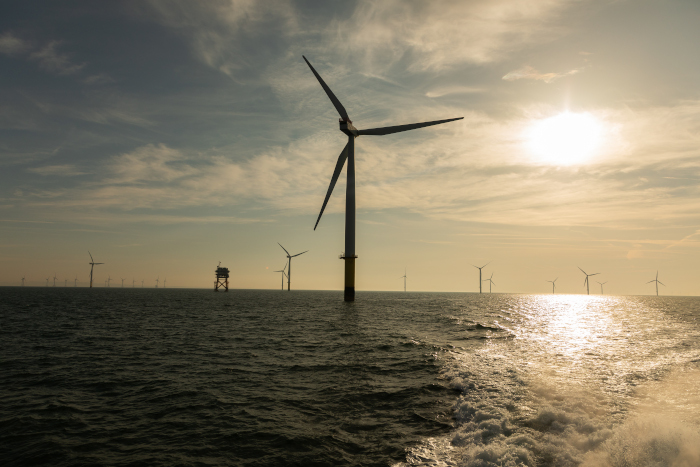Hizmetler
Kuzey İsveç'te endüstrinin yeşil hidrojen kullanmasına yardımcı olmak.
Teknolojilerimiz
En gelişmiş yenilenebilir enerji teknolojileri sayesinde, temiz enerjili bir geleceğe yön veriyoruz.
TeknolojilerimizKaynaklar
Şirket güncellemeleri, müşteri hikayeleri, sektör içgörüleri ve araştırma raporları dahil olmak üzere en son kaynaklarımıza göz atın.
Devamini okuKariyer
İşbirliği içinde çalışarak dünyayı değiştiren, teşvik edici çalışmalar yaparak hayata anlam katan, tutkulu bireylerden oluşan ekibimize katılın.
KariyerRES hakkımızda
Misyonumuzu yaşıyoruz. Kahramanlarımız ise, bu vizyonu gerçekleştiren insanlarımız... Dünyanın enerji üretme ve tüketme şeklini değiştiren dönüşümü birlikte kutluyoruz.
Hakkımızda bakınOfis Konumları
Küresel vizyonumuz ve yerel kültürümüzle gurur duyuyoruz. RES merkezlerine ait iletişim ve konum ayrıntılarını görebilirsiniz.
Bize ulaşınFacilitating further growth in offshore wind
by RES | Haz 11, 2022 | Okuma süresi: 3 min

Offshore wind is playing a pivotal role in achieving global emissions targets. In fact, a new target set out in the government’s latest Energy Security Strategy in April 2022 sets an ambition to produce up to 50GW by 2030. In this article, Robert Fradley, Head of Offshore Wind, discusses some of the changes that are needed to bring this goal to fruition and the skills gap that needs to be addressed to achieve this.
Over the past few years we have seen an increased focus on the role of offshore wind to help deliver a Net Zero future. We’ve just witnessed the government pledging new offshore wind targets, which will be underpinned by new planning reforms, to cut the approval times for projects from four years to one and an overall streamlining which will radically reduce the time it takes for new projects to reach construction stages.
In addition, we are also now working with larger, more efficient turbines. The largest offshore turbine being constructed will have an installed capacity of 15MW and will have blades 115.5m in length. These new turbines will generate almost eight times the amount of clean electricity, compared to the turbines installed at the UK’s first offshore wind farm, constructed in 2000. However, as we scale up, we need to scale up the ability to supply larger pieces of equipment and grow the supply.
The UK has one of the most experienced supply chains, but we need to widen the supply chain base to help provide the innovations required to install new turbine types, like floating for instance. The offshore wind industry can also help level-up the country by creating and sustaining high quality jobs at manufacturing sites and through local employment for the assembly, construction and O&M that follows.
However, one major flaw in the government’s plan is the workforce strategy to deliver all of this, and more. It’s crucial that we increase the size of the workforce and close the skills gap in order to meet the challenges of climate change and accelerate the move to a decarbonised future. But, with 70,000 skilled workers required, there is no quick fix to this problem. Looking to other sectors, like oil and gas, could help close this gap. With 30,600 people directly employed in the offshore oil and gas industry across the UK in 2019, there is huge potential here, especially given the training and expertise required to work in this environment.
Therefore, we should be looking to other sectors, for instance there are a vast number of former military personnel with transferable skills. In addition, businesses are also accountable and should be working with educational bodies to inspire the next generation and educate them on opportunities in renewables as well as working with trade bodies to lobby governments to provide more support for these skills transitions.
We also need to encourage more diversity in the industry as diversity maximises talent-driven innovation and can even boost productivity. Women make up 50% of the UK population, but only 12% of engineering professionals. It’s no secret the most diverse companies are more likely than ever to outperform less diverse peers on profitability, so the clean energy industry needs to address diversity to compete on future talent.
O&M practices must also evolve to allow the potential of offshore wind to be fully realised. As wind farms become more remote, risks increase. This is where we see robotics and autonomous systems supporting efforts to carry out some of the more hazardous works offshore. The use of technology and AI will also help us plan better. New technologies will also help us reduce costs as well as H&S risks. We are also increasingly seeing O&M base clusters in the UK and Europe. As some of the more remote developments come into fruition, we are seeing working patterns similar to the oil and gas industry whereby you have ‘two on’ and ‘two off’ rotations. For this to work though you need to have multiskilled technicians that can tackle numerous issues when offshore, coming back to the upskilling and training required in the industry.
Lastly, anyone working in grid will find the next 10 years a very exciting period of change. We have had a fairly stable grid system for many years. However, with the increase in different technologies such as storage and other renewables, and thermal being retired, we urgently need to invest in the grid infrastructure required to allow the grid to function efficiently with a new energy mix. To support the desired expansion of offshore wind in the UK, we need to consider how best to develop offshore grid connections too. This is the subject of the ongoing offshore transmission network review which is set to publish a number of key findings throughout the course of 2022.
Of course, this is just a high-level summary of just some of the challenges. There are huge opportunities when we look to floating and green hydrogen and 2022 is already promising to be an exciting year for offshore wind. RES is doing all it can to facilitate this change. Having been involved in the industry since its beginnings, we are using our expertise to help achieve our vision where everyone has access to affordable zero carbon energy.
